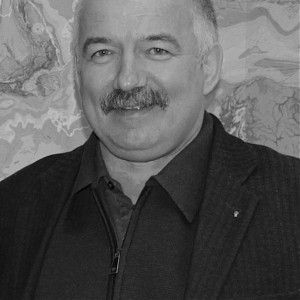Laboratory of Oil and Gas Geology
Chief Andrei G. Vakhromeev, Dr. Sci. (Geol.-Min.)
The staff consists of 15 persons, among which are five doctors and one candidate of sciences.
The laboratory was organized in 2012 according to the decision of the Scientific Council of the Institute.
The organization of this laboratory at the Institute gave rise to the revival of activities in the area of oil and gas research.
The major areas of the studies within the Program for Basic Research of RAS are “Oil and gas content and processes of naftidogenesis in the Cambrian sedimentary complexes of the southeastern Siberian platform. A role of marginal (pericratonic) troughs in hydrocarbon (HC) potential generation” and those within the VIII.73.2 Program of SB RAS are “Foundations of naftidogenesis theory, formation and evolution history of the Precambrian and Phanerozoic oil and gas systems” (coordinated by Acad. A.E. Kontorovich and Dr. of Geol-Min. Sci. L.M. Burshtein).
Studies now performed in the laboratory include careful consideration of geological-geophysical materials for the purpose of studying the structure and assessing oil and gas potential of the southern Siberian platform. The degree of certainty of oil and gas occurrence in the region and dynamics of subsurface resource management have encouraged the search for new ways of conducting research in different tectonic regions among which are the areas and conjunction zones between the marginal pericratonic troughs and investigated oil-and-gas provinces – Angara-Lensk step, Nepsko-Botuobinsky anteclise. Finally, the studies are aimed at substantiating the prospectivity of the areas for an increased broadening of the base of hydrocarbon raw materials in the Irkutsk Region. Much attention is paid to the improvements of geophysical techniques for the study of sedimentary cross-section to enhance their geological effectiveness. Doctor of Geol.-Min. Sci., Prof. A.V. Pospeev and Candidate of Geol.-Min. Sci. I.V. Buddo develop techniques for inverting electromagnetic data and study the problems of sharable electromagnetic sounding methods differing in their depth of investigation and resolution capacity.
Doctor of Geol.-Min. Sci. L.A. Baryshev develops the technique of rational combination of the seismic and electromagnetic data based on the formation of physical-geological models of target strata in a cross-section of the sedimentary cover.
Doctor of Geol.-Min. Sci., Leading Researcher A.M. Stanevich conducts the paleontololgical-stratigraphic studies of the Neoproterozoic deposits in the southern margin of the Siberian platform in the conjunction zone between the craton and the bordering fold mountains. The late Precambrian stratigraphy of the region is reconsidered.
Doctor of Geol.-Min. Sci. A.G. Vakhromeev has gained a large practical research experience in the study of features of the geological structure, hydrodynamic characteristics of fluid systems of the Precambrian carbonate reservoirs. Sometimes having high flow properties due to their sedimentation features and secondary changes in the cycles of the subsequent multi-step tectonic change, they can be both potential oil-and-gas bearing objects in the sedimentary section and unfavorable intervals in the geological environment complicating the deep-hole drilling.
Geological objects of particular importance are the late Proteroizoic rocks. Substantiation of their potential within the Pribaikal, Predpatomsky and Prisayan troughs is based on geological similarity principles. It is precisely in the rocks of similar age in the Krasnoyarsk Region where the Yurubcheno-Tokhomsky oil-and-gas accumulation area, one of the largest in Russia, was discovered. The Regional Exploration Program 2016-2020, worked out by the staff of the laboratory, involves the performance of integrated geophysical, geochemical and geological investigations aimed at providing potential oil-and-gas-bearing resources in the areas of pericratonic troughs that are not yet explored.
The research fields of the laboratory are, therefore, inseparably connected with the economic and socio-political conditions of the development of the Irkutsk Rgion because oil-and-gas industry and related products processing act as a driving force for the progression of industrialization therein.









